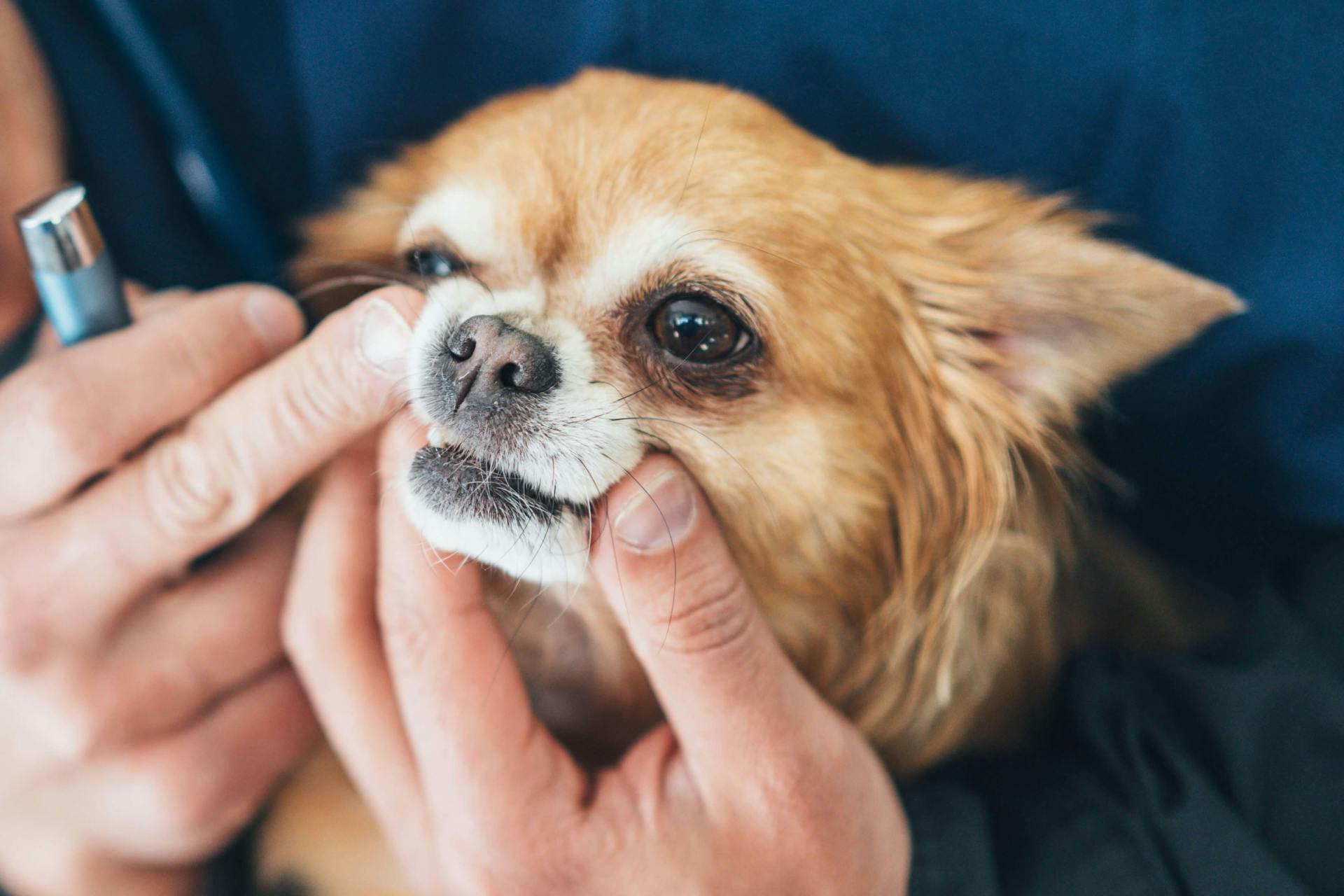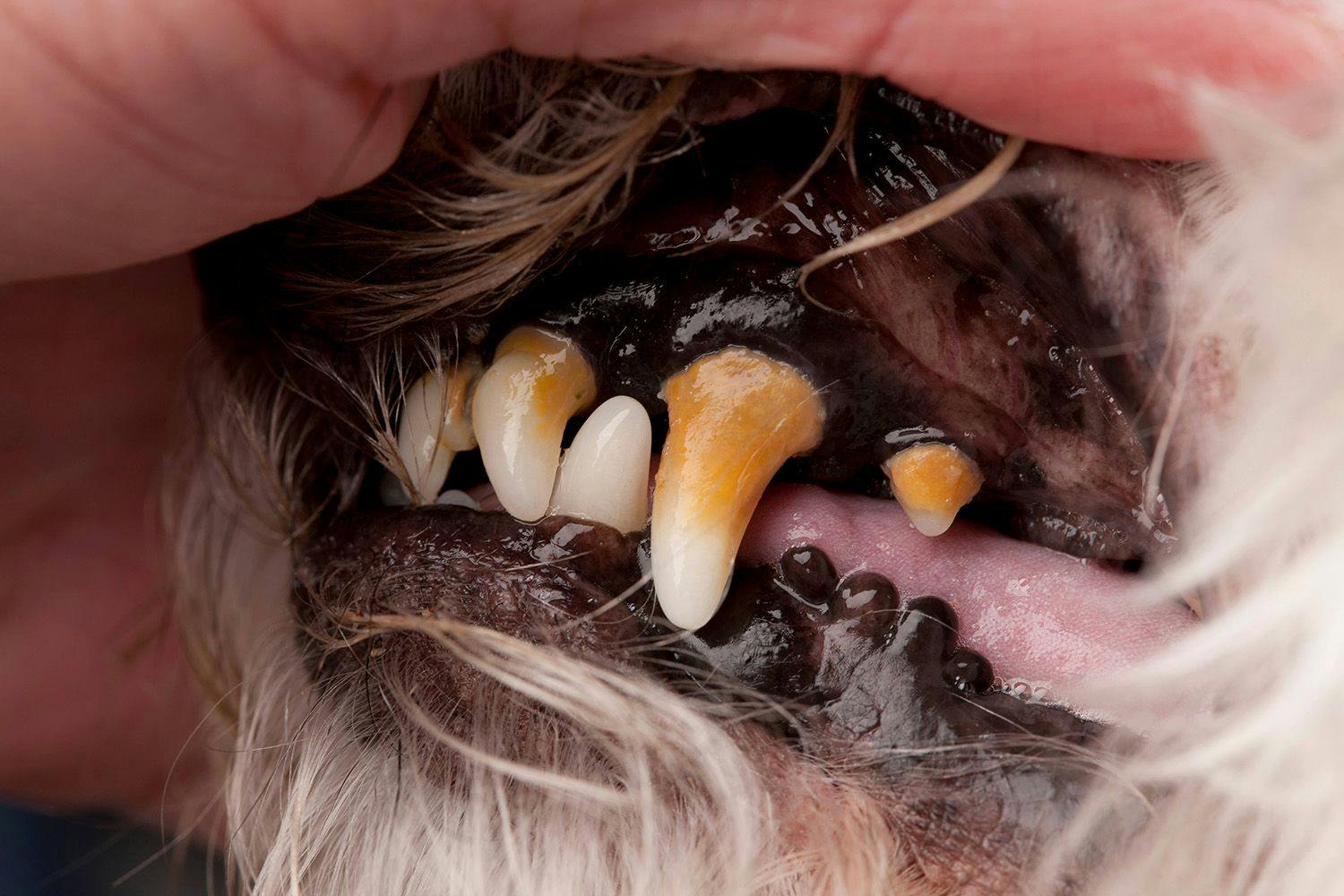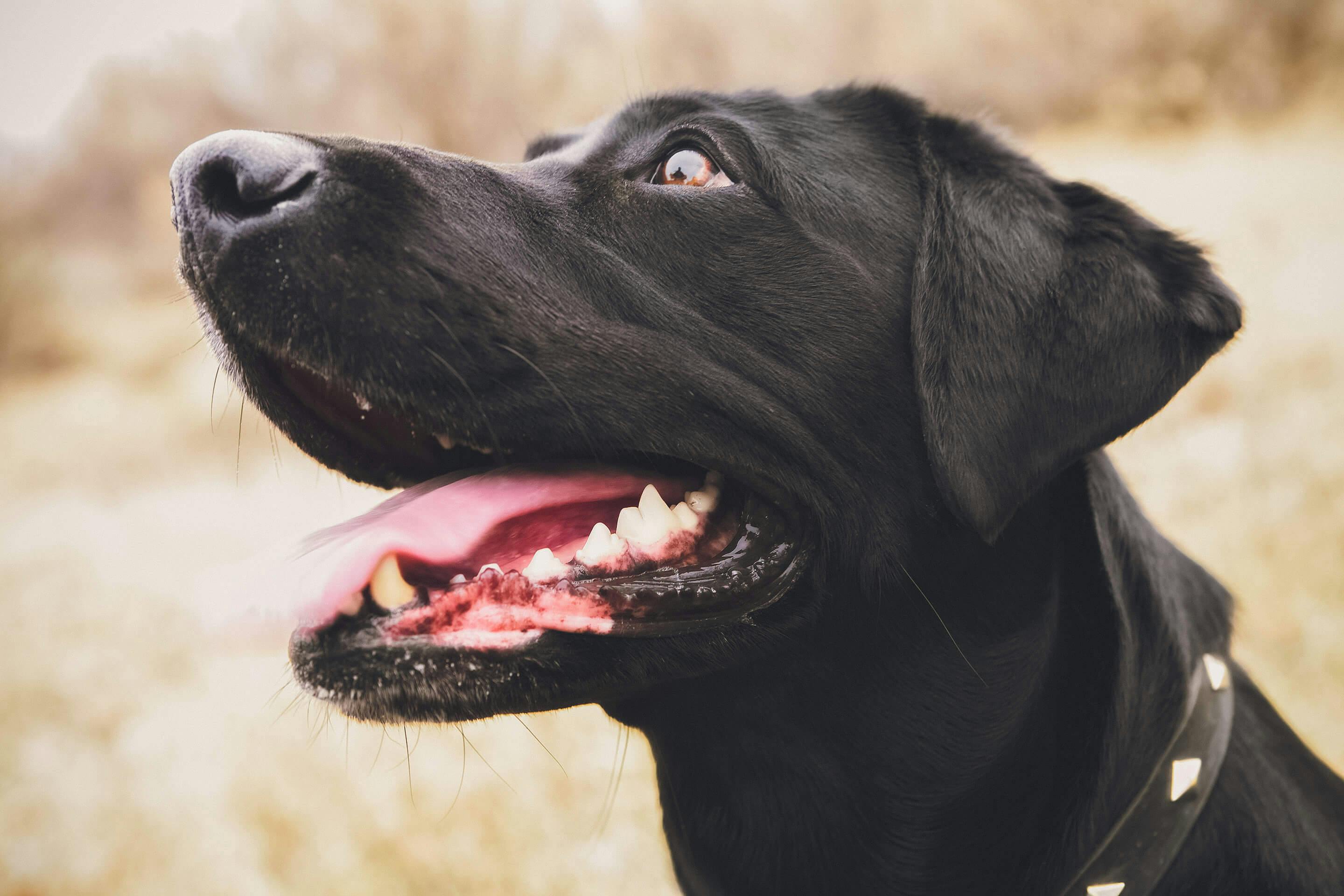
It sounds serious, and that’s because it is. Periodontal disease in dogs can cause your pooch pain, discomfort, and frustration – just like when we experience a debilitating toothache or dental issue.
Around 80% of dogs develop some form of dental disease by the time they are just three years old.
This is a commonly thrown around fact, and may feel like a scare tactic, but as humans, we don’t always take dog dental care as seriously as we should. It’s so common, and yet completely preventable.
We spoke to Dr Alison Kemp from our VET team, to talk us through periodontal disease and how we can all re-align our approach to our dog’s dental care.
“Unfortunately, many of us don’t take dog dental care as seriously as we should. For many years, people didn’t really think about dogs in the way they do now, as capable of feeling pain and discomfort, or getting the same health problems as we do. As well as this, animal dentistry has advanced significantly over time. Nowadays, there are a wealth of treatments and preventative options available,” says Alison.
What is periodontal disease in dogs?

You may have heard this term at the vet or online. Periodontal disease in dogs refers explicitly to a form of progressive inflammatory disease that affects the supporting structures of the teeth such as the bone and gums – so not really the teeth specifically. Still, it does affect the condition of the teeth as a result.
Periodontal disease is classified into four stages, which are also sometimes known as the four stages of dental disease. Beginning with mild gingivitis and plaque, it progresses to tartar build up, and eventually tooth and bone loss.
The signs of periodontal disease
The signs of periodontal disease in dogs are interlinked with the symptoms of dental disease. They vary in severity (depending on the progression of dental disease), but can present as the following:
- Tartar on the teeth – hard yellowy substance on the surface of the tooth
- Red or inflamed gums – especially near the teeth
- Drooling
- Bleeding gums
- Swelling of the face or jaw
- Aggression, especially if you’re examining the mouth, as your dog may be in pain
As you can see, periodontal disease in dogs can be subtle, or severe, which is why it’s essential to get regular vet check-ups in order to figure out what stage of dental disease or periodontal disease your dog may have.
Bacteria build up around the plaque and tartar can move elsewhere in your dog’s body through the bloodstream, entering the heart or kidneys, and potentially causing more damage unseen and unnoticed by you. This is one of the reasons why we advocate getting dental disease treated sooner rather than later!
The four stages of dental disease progression
Often referred to as the stages of dental disease, or stages of dog periodontal disease (gum disease in dogs), these are the standard levels in which a vet can assess your dog's oral health. You want to avoid getting to stage four at all costs, as this can lead to tooth loss and worse.
Stage 1: Stage one of dog periodontal disease is often minor in visibility to the untrained eye, however most important to recognise and treat, to prevent further dental disease progression.
- Gingivitis present (inflammation of gums)
- Presence of tartar and bacteria
- Swelling of gums
- A thick red line just around and next to the teeth
Stage 2: From stage one, the next level of periodontal disease in dogs is a severity of dental disease progression often named as ‘early periodontitis’ because the structures around the teeth begin to become affected. Stage two is mostly only identifiable by a vet.
- Mild bone loss
- Periodontal pockets form – where there is a loss of gum attachment to the tooth
- Mild gingival recession
- Bad breath highly noticeable
Stage 3: When it hits this level of seriousness, being stage three of periodontal disease in dogs, it’s considered to be mild periodontal disease, where even more damage occurs to structures around the teeth.
- Significant bone loss, around 25-50%
- Gums will often bleed easily when touched or treated
- Bad breath highly noticeable
- Periodontal pockets become deeper
- Possible ulceration of gingiva
Stage 4: Stage four of dog periodontal disease is the worst form of progression, where your dog will have significant pain and may need removal of teeth. In worst case situations, this can also mean infection and damage to internal organs.
Higher than 50% bone loss Bad breath highly noticeable Extensive plaque and calculus Deep periodontal pockets
Treating periodontal disease in dogs
Treatment of periodontal disease in dogs can vary, depending on the level of dental disease progression, as highlighted above. While at stage one, a professional dental clean and continued program may bring your dog’s teeth back on track, the later periodontal disease levels may include loss of teeth and antibiotics.
However, it doesn’t really matter the level of periodontal disease; a professional clean can bring your dog’s teeth into a healthier state long term – which may prevent further progression. Paired with pain killers, and an ongoing treatment plan, it may prevent a dog dental procedure to remove teeth.
At the lower end of periodontal disease progression, you should also take care of your dog’s teeth at home as best you can, by providing a variety of dental treats, tooth brushing and possibly trying a specialised diet.
If you want to book your dog in for a FREE dental check with a Petstock Vet Nurse, find your local Petstock VET.
How to keep my dog's teeth healthy?

It's a question commonly raised due to bad breath or rotten looking teeth – which, unfortunately, is the wrong time to address the issue (not that it can't be treated). To avoid periodontal disease in dogs (or any form of dental disease), you should have a regular routine to keep your dog's teeth and mouth clean. And with a slow and consistent introduction of teeth cleaning products, it doesn't need to be a high anxiety or comical event for you or your dog.
"I always say that we should mirror our own preventative health routines in our pets. What do we do to look after our teeth? Daily brushing and flossing, then regular trips to the dentist or hygienist to keep them looking shiny and our gums feeling healthy! This is what we should be doing for our dogs." - Dr Alison Kemp, Petstock VET
Dog teeth cleaning
It can be done at home, and at the vet; canine dental hygiene services are available in many locations, and we suggest you look into it. Even if you brush your dog’s teeth at home, you should also book your dog into a vet for a professional dental clean about every six months – but talk to your local vet for a personalised plan.
The main goal of cleaning your dog’s teeth regularly at home is to prevent the sticky plaque build-up which occurs over time. A lot of different brands have dog-specific brushes and toothpaste to get the job done.
Free dental check at Petstock Vet
If you didn’t know, or didn’t realise just how serious, but also just how preventable periodontal disease in dogs is, you do now. If caught early, dental disease in dogs is fully reversible. Speak to your vet for a fully informed dental plan. Or take on b
Find a Vet